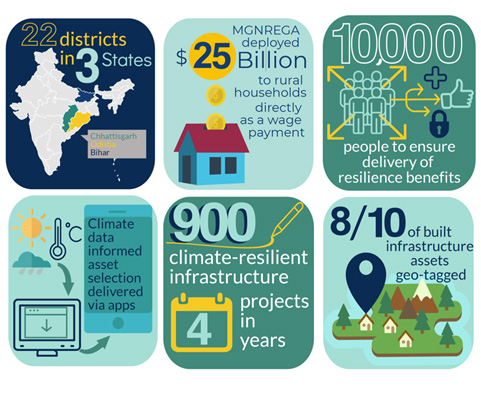This is how communities in rural India are building resilience from the ground up
Rural India is feeling the effects of climate change. A new project is helping communities transform their infrastructure to withstand extreme weather.
A
new case study, produced by Acclimatise for The Resilience Shift, examines a technical assistance programme in India supported by the UK’s Department for International Development (DFID).
The Infrastructure for Climate Resilient Growth (ICRG) project has initiated over 900 climate resilient infrastructure projects in just 4 years. Remarkably, it has achieved this without mechanical diggers, architects, or engineering companies being involved. How? By putting power in the hands of local communities themselves.
The ICRG project, which is currently active across 22 districts in three Indian states, is connected with India’s largest social security programme which pays locals to build infrastructure assets. So far, the wage-for-labour programme has deployed $25 billion as wage payments to rural households in over 13,000 villages. Under the project, infrastructure assets, are identified by local communities and designed, built and maintained by ‘barefoot engineers’, living in remote rural communities. The ICRG project has provided training to over 10,000 people to ensure the infrastructure delivers resilience benefits.
The case study will be of interest to all those engaged with the infrastructure development processes, especially in developing world contexts. It provides details of the ICRG project’s approach at each stage of the infrastructure development process, from diagnosing and financing, to design and development and through to operations and maintenance. It shows how new approaches to infrastructure development can help deliver resilience benefits at scale for vulnerable communities in rural India.

The project in a nutshell. Infographic by Acclimatise News.
In particular, the case study holds important lessons about participative approaches to infrastructure identification, design, construction, and maintenance by non-specialists. By focusing on the livelihood benefits, delivered both through the wages received for labour, but also thanks to the dividend from improved infrastructure, the ICRG project has been able to deliver a large and growing portfolio of assets in a short period of time.
The ideas presented in this article aim to inspire adaptation action – they are the views of the author and do not necessarily reflect those of the Global Center on Adaptation.